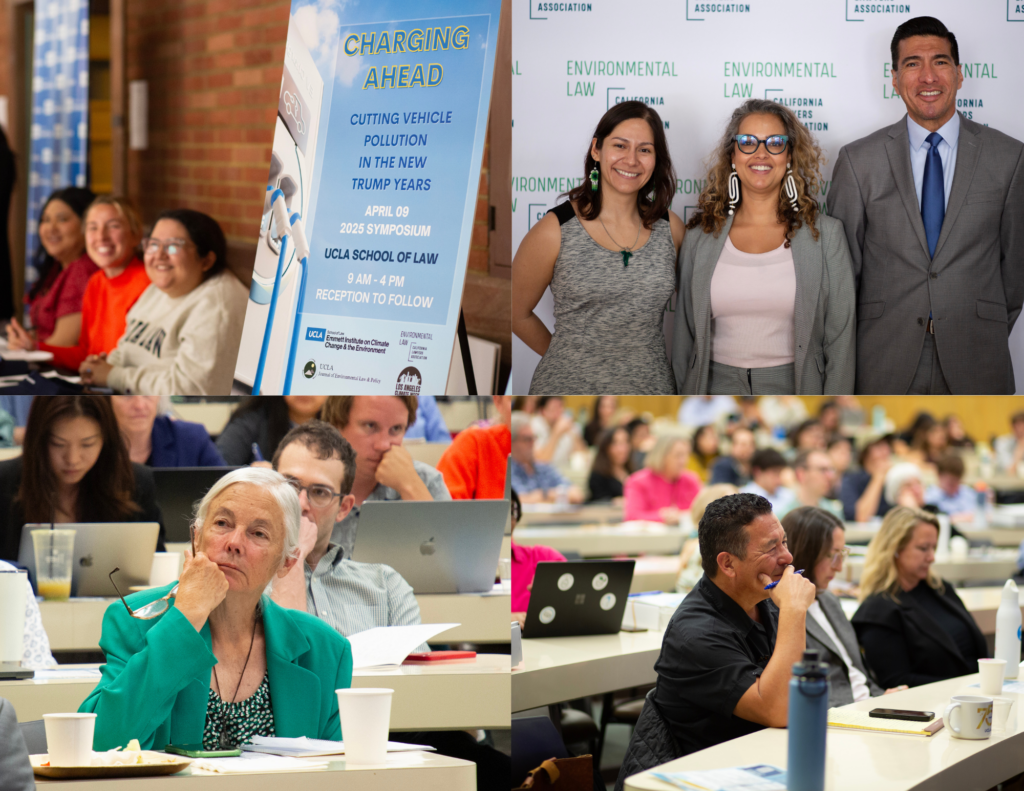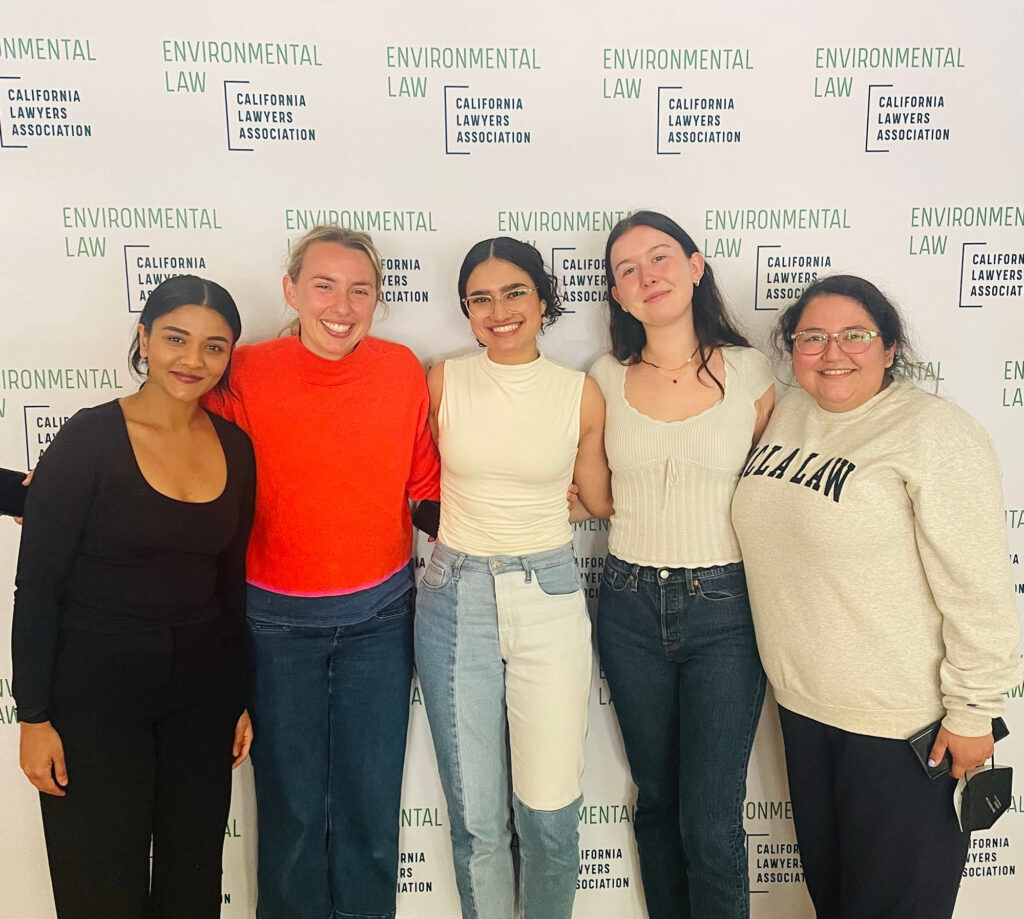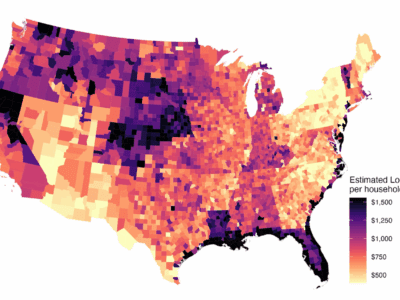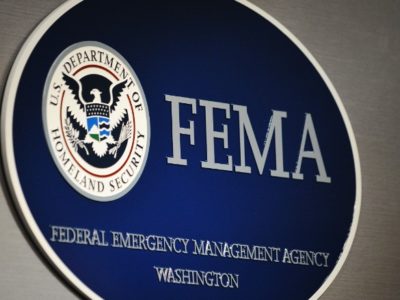“What We Do Matters:” UCLA’s Charging Ahead Symposium
States and cities have a lot of tools to cut vehicle pollution. It’s time to break them out.

Trump is a bump. A nasty one, but a bump nonetheless, because the world is on the road to zero-emission fuels and vehicles no matter what. That was one takeaway from “Charging Ahead,” the UCLA Emmett Institute’s annual symposium held on April 9 — devoted this year to cutting vehicle pollution during the next four years and beyond. Another overarching idea: states like California and cities like Los Angeles have a lot of tools — it’s time to break them out.
More than 175 people turned out for the all-day symposium at UCLA Law, co-hosted by the California Lawyers Association’s Environmental Law Section and co-sponsored by LA Climate Week and the UCLA Journal of Environmental Law & Policy. The event featured a keynote address by California Attorney General Rob Bonta, three expert panels on a variety of transportation themes, and some inspiring plenary remarks from Emmett Institute Faculty Director Ann Carlson based on a forthcoming book about how Los Angeles cleaned up its air. We’ve done hard things, and we can do them again, she told the crowd.
 “In the 1970s, the average kid in Southern California — that would include me — had blood levels that were 1000 percent higher than the levels that were found in kids in Flint, Michigan after the problems with the water system in Flint,” Carlson said. “Lead concentrations in the air were 50 times higher than they are today, and we were all breathing that in. Southern California has not violated the standard for lead since 1993. That’s pretty extraordinary.” Carlson told the story of those who helped topple LA’s smog, ending with, “Individuals matter, government leaders, scientists, lawyers, activists, reporters — what we do matters in an extraordinarily difficult time.”
“In the 1970s, the average kid in Southern California — that would include me — had blood levels that were 1000 percent higher than the levels that were found in kids in Flint, Michigan after the problems with the water system in Flint,” Carlson said. “Lead concentrations in the air were 50 times higher than they are today, and we were all breathing that in. Southern California has not violated the standard for lead since 1993. That’s pretty extraordinary.” Carlson told the story of those who helped topple LA’s smog, ending with, “Individuals matter, government leaders, scientists, lawyers, activists, reporters — what we do matters in an extraordinarily difficult time.”
Attorney General Rob Bonta echoed that sentiment and focused on protecting California’s policies, values, and authorities. “We will be able to continue to defend California’s progress against the targeting of our climate action by the Trump administration,” he said, calling out the state’s greenhouse gas reduction goals, cap-and-trade law, and clean vehicle waivers as ones he expects to successfully defend. Below are more key takeaways and videos of each of the panels.
“I started making a list of threats and it went on and on and on.”
Panel One explored where we stand with zero-emission vehicles, the biggest threats, and solutions to maintaining momentum. “I started making a list of threats and it went on and on and on,” said Joe Lyou, of the Coalition for Clean Air, who was joined by Carlson; Brian Goldman, with the Office of California Governor Gavin Newsom; Craig Segall, Craig Segall Consulting LLC; and moderator Alexander Nieves, who covers transportation for POLITICO’s California Climate newsletter.
- The panelists found consensus that the transition to EVs is at a point of no return, at least globally, but that the burgeoning effort to electrify heavy-duty truck fleets is more fragile.
- Segall noted that blue states like Maryland, Massachusetts, and Oregon have pursued, or are considering, rollbacks to their California-based heavy truck emissions laws. “Part of that is, I think, an overreading of the election results, thinking that affordability means all environmental policies are to be slowed or scrapped, or a willingness to lean toward Trump’s side of the issue,” Segall said, calling it a “catastrophic political misperception.”
- Some on the panel suggested California should fund its own state-version of the Inflation Reduction Act-style programs and think about “money rather than regulation” as the thing to accelerate clean technology and throw a lifeline to firms relying on federal incentives. Doing so could require new revenue streams and creative thinking about how to get around the obstacles presented by California’s infamous Prop 13 as well as Proposition 26. That may require going to voters through the ballot initiative process.
- There is some low hanging fruit: we spend more on highway construction than any other form of transit.
- “I think we plan for the next governor. What can we put on the next governor’s plate, that they’re willing to do,” Lyou said. “Things like a road user charge, things like ‘split roll,’ other things that could really fundamentally change the dynamics of how we invest in the future.”
- Another climate policy reorientation the panel discussed was talking more about air pollution and less about climate pollution. “We focus too much on the climate pollution benefits of these policies and not the air quality benefits,” Carlson said. “We have done a poor job in articulating the benefits people get from clean air.”
“Warehouse, you are the reason.”
Panel Two focused on “place-based approaches to transforming fleets” in cities and local air districts, including the role of Zero Emission Vehicle-only zones and Indirect Source Rules. The panelists were Jessi Hafer Fierro from the California Air Resources Board; Adriano Martinez, Deputy Managing Attorney of Earthjustice; Amy Turner of Columbia Law School; and UCLA Law’s Brennon Mendez as moderator. The Emmett Institute is publishing a new policy brief later this week on the promise of using ISRs to clean our air so stayed tuned.
- Fierro started with slides on a range of California’s clean air policies and an introduction to three words that we’d hear a lot the rest of the day: Indirect Source Rules. These are rules for regulating pollution hotspots by targeting the mobile pollution sources that are drawn to them, like cars, trucks, Fierro explained. “You say, ok, warehouse, you are the reason why those mobile source emissions are here,” she said. “They’re driving around because of the warehouse. It is the magnet.” Rather than regulate the mobile sources themselves, you assign them to the facility.
- Turner continued with a presentation on the current gap that exists in regulating the emissions from e-commerce warehouses but also ticked through some innovative city approaches.
- Martinez recounted the process of passing a Warehouse Indirect Source Rule in the South Coast Air Quality Management District and the early evidence that the rule is cleaning up LA’s air while not threatening the ever-growing logistics industry the way critics of the policy said it would. In fact, South Coast concluded that over the last 10 years, the total inventory of warehousing space increased by 41% and warehouse rental prices increased by 164% in the district.
- It’s a winning formula, so why have only 2 of California’s 35 air districts adopted ISRs? “The issues that are preventing us from making more progress with Indirect Source Rules are not legal, are not scientific — they are political.” said Martinez.
- Turner noted that both the city and state of New York are currently considering an ISR and that frontline communities themselves are giving central input to those potential warehouse rules, including delivery drivers and logistics employees. “Many distribution centers are located in low-income, environmental justice communities,” Turner said. “This is a policy area where the city at least and advocates to a great extent have been very good about bringing those folks to the fore.”
- Asked about using “place-based” regulations toward sports facilities ahead of the 2028 LA Olympics, Martinez said it’s a good idea, but that Earthjustice is focused first on tougher rules for: the port, rail, and airports.
- A bill pending in Sacramento (AB 914 by Assemblymember Robert Garcia) would clarify CARB’s ability to adopt ISRs alongside local air districts. An audience question asked if it was needed? “I think the authority is stronger if we can get it specifically, directly stated in the health and safety code,” Fierro said.
“We’re building more but not getting tons of more service.”
Panel Three got us out of cars and trucks and into metro trains and buses. Panelists were Madeline Brozen, UCLA Luskin School of Public Affairs; Bryn Moncelsi, Climate Resolve; and moderator Cara Horowitz, the UCLA Emmett Institute’s executive director.
- Moncelsi explained that California has made real strides through AB 32 but that the state is not on track for 2030 carbon goals, because of the tricky transportation sector. Emissions reductions, she said, has 3 legs of the stool: shifting fuel sources (electrification), decarbonizing the electric sector, and reducing vehicle miles traveled (VMT).
- Moncelsi presented slides on recent legislative approaches to creating more sustainable communities through regional planning and where those approaches are falling short on actually driving down VMT. “We can’t just be putting more buses out there into traffic and making a difference,” she said, noting that bus-only lanes and improvements to the job of bus driving are important.
- We need to invest in more transit options, the panel agreed and follow it with better tools to make that service go further. When it comes to actually expanding public transit, LA has work to do, the panel agreed. “We are not putting more bus service out on the streets — and that is the backbone of our service in Los Angeles, the backbone of pretty much most transit service in the United States. Even on the rail side, we are building more, but we are not really getting a ton of new service.”
- Brozen gave a talk based on case studies that focused, in a word, on balance — balancing quality of life with transportation opportunities, balancing the goal of reducing VMT and increasing transportation access. And doing so in a way that accounts for a wide variety of income levels and transportation needs “Some people need to be allowed to drive more,” she said. That doesn’t mean that we want to see an increase in car ownership, but an increase in access to many different, competitive modes of transportation, including rideshare, robust transit service, and subsidies for lower-income people to access multiple modes of transportation.
- “The bottom line is the best tool to get higher-income people to drive less is to appropriately price our transportation system,” Brozen said. “We have a woefully underpriced and very messed up market that we’ve created that has… very little connection between how much you do the thing and how much you pay.”
- Congestion pricing, or road pricing, was one example the panel covered. Road pricing works, as we’re seeing in the New York where congestion pricing program is just 3 months in, but the preliminary results are very encouraging. “It’s reducing cars — 60,000 cars poof off the road, you have travel times down, you have ‘on time performance’ going up, you have transit riding going up, the streets are safer, fewer people are honking, and by the way it’s raising $50 million a month,” Brozen said. “There’s not any other tools in the toolbox that do all these things at once.”
Many more big ideas and solutions surfaced during the panels so do watch the videos above. Big thanks to all of our panelists and to our student volunteers from JELP (below) for making the day a success.








Reader Comments